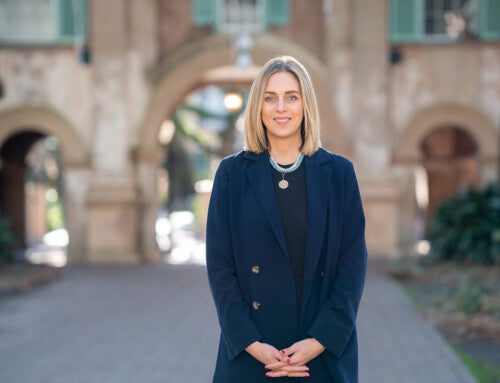The College of Charleston Board of Trustees voted today on tuition costs for the 2010-11 academic year. The board voted to increase tuition by $1,326 per year for undergraduate students.
Tuition in 2010-11 will be $10,314 for undergraduate students who are South Carolina residents, and $23,172 for undergraduate students from outside the state. As part of the College’s strategic plan, an additional $3 million in financial aid will be added to the annual budget to assist families with financial need
“Like many public universities across the nation, the College has implemented a tuition increase in part to offset substantial state budget cuts,” said Marie Land, chair of the Board of Trustees. “But raising tuition is about more than filling funding gaps. The Board of Trustees has approved a 10-year strategic plan to make the College of Charleston the Southeast’s leading public liberal arts and sciences university, and tuition is part of the overall financial model for achieving the goals in that plan.”
The tuition rates for 2010-11 amount to a 14.75% increase in undergraduate tuition for South Carolina students, and a 6.07% increase for undergraduate non-resident students.
The Board of Trustees also voted to increase tuition for The Graduate School of the College of Charleston. Tuition in 2010-11 will increase by $1,460 per year for all graduate students. Tuition in 2010-11 for graduate students who are South Carolina residents will be $11,346, and will be $25,490 for graduate students from outside the state.
Reductions in state support for the College of Charleston total $16.1 million over the past two years. In 2010-11, state support will represent less than 9 percent of the College’s total operating budget.
“Without sufficient resources, the College cannot fully realize its potential, nor can it meet the needs of students and the community as expressed in its Strategic Plan,” said President George Benson. “The College must have the ability to support academic and campus life initiatives, to significantly increase the level of student financial aid, to hire additional faculty, to enhance and maintain existing facilities, and to construct needed new facilities.”
Over the past two years, the College has implemented significant cost cutting measures. These reductions include elimination of vacant faculty and staff positions, reducing travel and operational budgets throughout campus, cutting programs considered to be non-essential, deferring certain technology replacements, instituting strict new rules on purchasing, and cutting reserve funds. Other steps include renegotiating lease arrangements and consolidating campus multimedia and technology functions.
“Our highest priority is to provide the best learning environment for our students,” said Benson. “The cost of higher education represents a substantial investment for families, so it’s vital that we are able to continue to offer an educational experience that prepares our students for success.”
The financial model for the College, Benson added, is not just based on tuition increases. It includes significant emphasis on private and government grants and philanthropy, as well as the development of entrepreneurial, revenue-generating programs and activities.
“The Board of Trustees and President Benson are extremely concerned about maintaining the College’s quality as well as its affordability,” said Land. “These tuition rates are necessary to preserve the quality and value of our educational offerings.”



